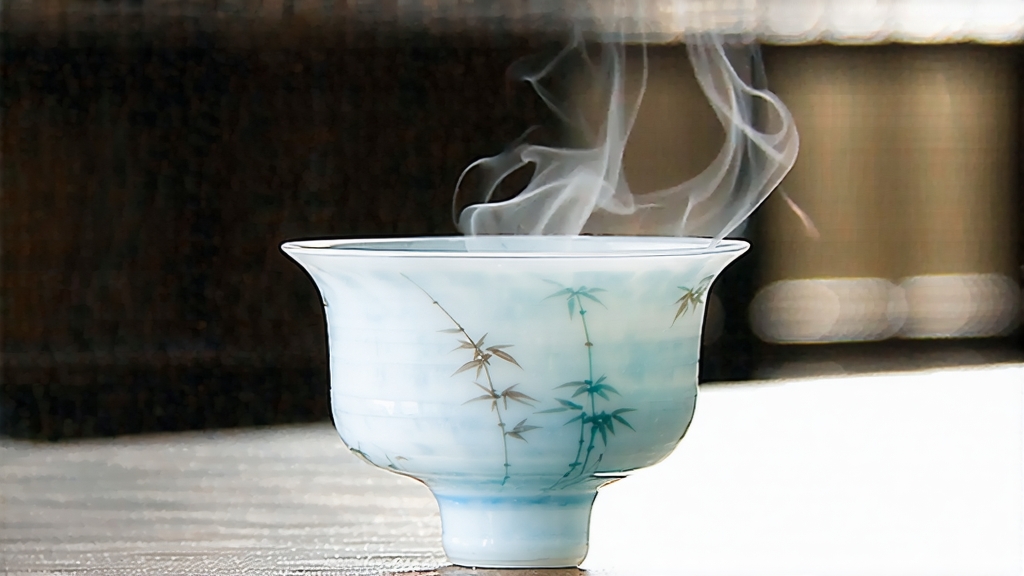
Silver Needle—Bai Hao Yin Zhen in Mandarin—is the most aristocratic expression of white tea, a style so minimally processed that it appears almost untouched by human hands. Yet within its down-covered buds lies a chronicle of Chinese terroir, climate, and centuries-old restraint. International drinkers often meet white tea through bagged blends, but to know Silver Needle is to encounter the quiet apex of the category: a liquor the color of early dawn, a fragrance that drifts between freshly shelled chestnut and sun-warmed meadow, and a sweetness that arrives only after the swallow, like a secret whispered downstream.
Historical records place the birth of white tea in the Song dynasty (960-1279), yet Silver Needle itself crystallized as a commercial grade during the late Qing, when Fuding and Zhenghe counties in Fujian province began selecting only the unopened bud—plump, ivory, and coated in fine trichomes—to satisfy court taste. Export documents from 1857 show the first shipment leaving Fuding’s Bailin port for Hong Kong, then onward to Dutch tea houses where it was marketed as “Pekoe Silver Tips,” a name that still confuses traders who lump it with Ceylon grades. The bud-only plucking standard was codified in 1885 by the Chen family workshop, whose descendants continue to supply state banquets today.
Geography is inseparable from quality. The Min River’s east-bank mountains rise gently from the East China Sea, catching maritime fog that diffuses ultraviolet light; the result is buds rich in theanine and protected from the astringent catechins that sun-stressed leaves develop. Soils are lateritic, high in iron and quartz, draining quickly so that the bush is forced to store amino acids in tight spring shoots. Two cultivars dominate: Fuding Da Bai (“Big White”) and the slightly broader Zhenghe Da Bai. The former yields slender, needle-shaped buds with silvery sheen; the latter produces a plumper profile and darker cup, prized in domestic markets but less known abroad. Purists insist that anything harvested outside the coastal micro-zone, or picked after Qingming festival (around April 5), forfeits the right to the Silver Needle name.
Craft begins at dawn when dew still glimmers. Pickers wear cotton gloves to avoid bruising the bud’s epidermis, snapping the stem just above the first leaf scale. A full kilogram of finished tea demands roughly thirty thousand buds, all gathered within a seven-day window when the tip stands erect and the trichomes lie flat like frost on a windowpane. Once back at the shed, the buds are spread on bamboo trays no thicker than two centimeters; they must not touch one another, or enzymatic browning will mar the pristine color. For the next thirty-six to forty-eight hours the trays rest in a ventilated loft where temperature hovers between 22–26 °C and relative humidity at 65–70 %. No heat, no rolling, no shaking—only the slow evaporation of moisture and the quiet oxidation of polyphenols at leaf edges. Master withers listen: when the bud snaps rather than bends, and the grassy note gives way to a soft biscuit aroma, the tea is rushed to a low-temperature dryer (40 °C) for a final twenty-minute stabilization. The entire process consumes no more than 5 % of the leaf’s original weight, preserving the highest concentration of antioxidants among all Camellia sinensis styles.
Grading follows a protocol set by the Fujian Provincial Tea Standard (DB35/T 1076-2010). Top-tier “Special Grade” must be 100 % bud, uniform in length (2.5–3 cm), with at least 90 % surface coverage of silvery hairs. Second grade allows 5 % open leaf, while third grade may contain 10 % and is often blended into cake teas for aging. Color should be “silver with iron-green flash,” a nuance that signals proper withering; any yellow tinge indicates over-oxidation, whereas grey points to loft temperatures that dropped too low. A simple visual test is to drop ten buds into a glass of cold water: superior needles stand vertically for at least three minutes, buoyed by air trapped in the hollow base of the bud.
Western brewers frequently scorch Silver Needle by treating it like green tea. The leaf is more robust than appearance suggests, yet it demands cool respect. Begin with 4 g—about two heaping teaspoons—for a 250 ml vessel. Water temperature should rest at